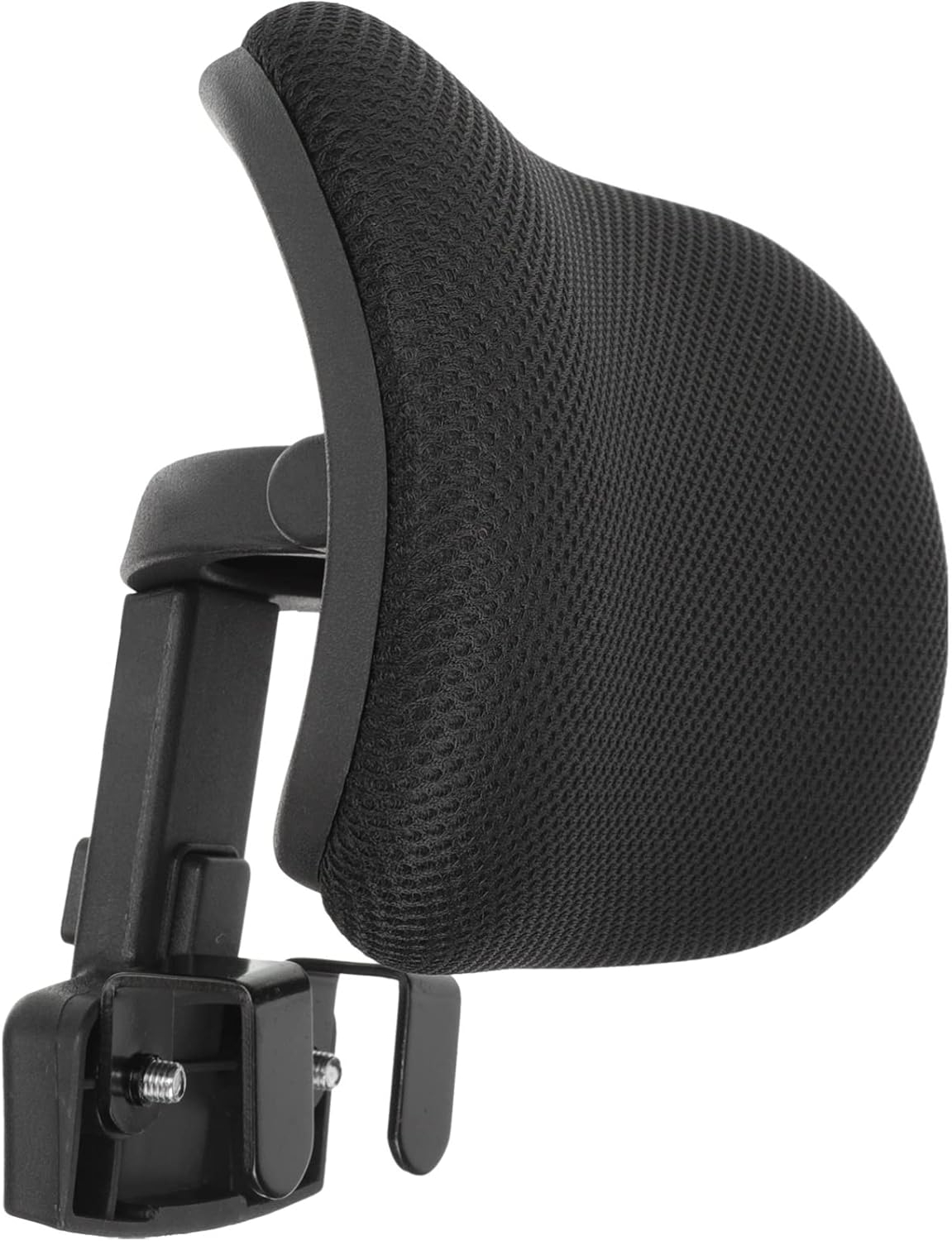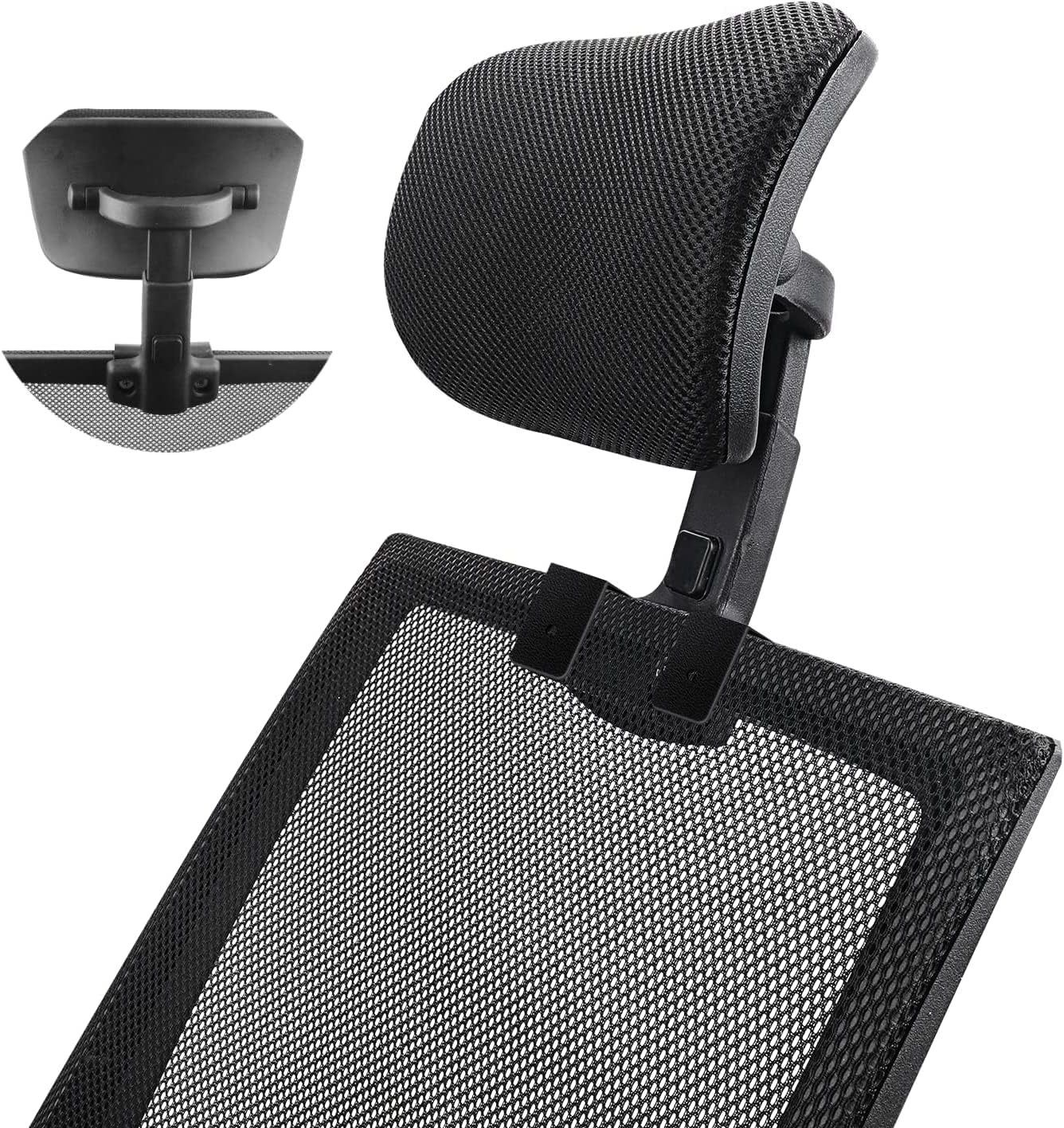You’ve got the ergonomic mouse, the standing desk converter, and a chair that feels pretty darn good. But what about that often-overlooked attachment: the headrest? We tend to think of it as a luxury, or maybe just a place to hang our coat. But what if I told you it’s actually a vital component for your well-being at work, especially if you spend long hours seated? Let’s dive deeper than the surface and uncover the true power of a well-designed office chair headrest.
For many, an office chair headrest is an afterthought, a feature that comes with higher-end models but isn’t necessarily a dealbreaker. We might even think, ‘I don’t really lean my head back that much.’ And that’s fair. But the real magic of a headrest isn’t just about lounging. It’s about supporting your entire upper body, from your neck all the way down to your spine. Think of it as the unsung hero of your seated posture, working quietly to prevent strain and promote a healthier workday. Let’s explore why this ‘extra’ can make such a significant difference.
The Foundation: Neck and Spinal Alignment
This is where the headrest truly shines. When you’re sitting for extended periods, it’s easy for your head to drift forward, even just a little. This puts immense pressure on your neck muscles and can throw your entire spinal column out of alignment. A properly adjusted headrest provides a gentle counter-pressure, encouraging your head to remain in a neutral, aligned position. It acts like a subtle guide, reminding your body to maintain good posture. This might seem minor, but over hours and days, it can prevent a cascade of discomfort, from stiff necks to nagging headaches. It’s about creating a stable foundation for your upper body, reducing the muscular effort needed to hold your head up.
Reducing Neck and Shoulder Strain
Ever feel that familiar ache in your neck and shoulders after a long day? A lot of that can be traced back to the strain of constantly holding your head up. Without adequate support, your neck and shoulder muscles are working overtime. A headrest offers a place for your head to rest, literally. This reduces the load on those muscles, allowing them to relax. Imagine carrying a bowling ball all day versus having a comfortable place to set it down. That’s the difference a headrest can make for your muscles. It’s particularly beneficial if you tend to lean forward to see your screen or type intensely; the headrest can help you maintain a more upright and less strained posture.
Enhancing Overall Posture and Comfort
Good posture isn’t just about looking professional; it’s about how your body functions. When your neck and spine are properly aligned, the rest of your body tends to follow suit. A headrest contributes to this by preventing the forward head posture that often leads to slouching. By supporting your head, it encourages a more upright and balanced stance. This improved posture can lead to greater comfort throughout the day, making it easier to focus on your tasks rather than on aches and pains. It’s a ripple effect: a supported head leads to a more aligned spine, which in turn promotes better overall body alignment and a more pleasant sitting experience.
Aiding in Fatigue Reduction
When your body is working harder to maintain posture and support itself, you get tired faster. Think about it – if your neck muscles are constantly engaged, they’ll fatigue sooner. By offloading some of that work to the headrest, you’re essentially giving your muscles a break. This can lead to a noticeable reduction in overall fatigue, allowing you to maintain productivity and energy levels for longer. It’s not about being lazy; it’s about working smarter and allowing your body to be more efficient. A less fatigued body is a more comfortable and productive body.
When is a Headrest Most Beneficial?
While anyone can benefit, a headrest is particularly valuable for:
- Long Sitting Sessions: If your workday involves hours upon hours in your chair, the support becomes crucial.
- Users with Neck or Upper Back Issues: Those already experiencing discomfort can find significant relief.
- People Who Tend to Recline: If you enjoy leaning back to think or take a brief pause, a headrest provides essential support in those positions.
- Individuals Focused on Ergonomics: For those who prioritize a healthy workspace, a headrest is a key component of a truly ergonomic setup.
- Gamers and Enthusiasts: These groups often spend extended periods in their chairs and can greatly benefit from the added support to prevent strain. It’s a tool that actively contributes to your physical well-being in a sedentary environment.
Choosing and Adjusting Your Headrest
Not all headrests are created equal, and proper adjustment is key. Look for a headrest that is:
- Adjustable: It should move up and down, and ideally tilt, to match the curve of your neck.
- Supportive, Not Pushing: It should gently cradle your head, not force it into an unnatural position.
- Comfortable: The material should feel pleasant against your skin.
To adjust it, aim for a position where the curve of the headrest aligns with the natural curve of your neck. You shouldn’t feel like you’re being pushed forward, but rather gently supported. Experiment with height and angle until you find that sweet spot – it’s a personal adjustment that can make a world of difference. Don’t be afraid to play around with it until it feels just right for your body.
So, that headrest? It’s far more than just an accessory. It’s a functional element designed to support your neck, align your spine, reduce strain, and enhance your overall comfort and productivity at work. When choosing an office chair, don’t underestimate the value of a good headrest. And if your current chair has one, take the time to adjust it properly. You might just discover a whole new level of comfort and well-being in your daily grind. It’s an investment in your health that pays dividends throughout your workday and beyond. Give it a try and feel the difference.



![Top 5 Office Chairs with Adjustable Headrest for 2025 [Reviewed]](https://homeskoe.com/wp-content/uploads/2025/10/amazon-com-office-chair-mesh-headrest-attachment-height-and-angle-adjustable-universal-neck-with-regard-to-office-chair-headrest.jpg?width=480&f=jpg)











